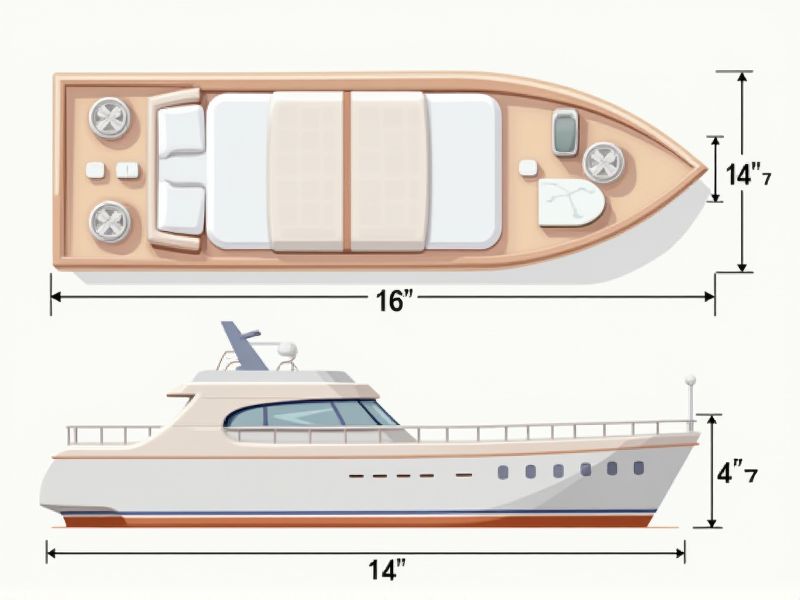
When booking a cruise, understanding cabin dimensions can help you choose a space that best fits your needs. Standard interior cabins on most cruise ships typically measure between 130 and 185 square feet, which is similar in size to a modest hotel room. Oceanview and balcony cabins are a bit larger, ranging from about 160 to 220 square feet, and often offer additional floor space with outdoor balconies included. Knowing these typical dimensions helps set realistic expectations for comfort and layout, allowing you to select the right cabin for your travel style and budget.
Cabin Square Footage
The standard cruise ship cabin typically ranges from 150 to 200 square feet, providing essential space for relaxation and comfort. Some premium suites can exceed 500 square feet, offering luxurious amenities and stunning ocean views. Modern vessels often incorporate innovative storage solutions, maximizing use of every square foot for a more functional layout. When choosing your cabin, consider factors like location, size, and the types of available facilities to enhance your cruising experience.
Ceiling Height
The standard ceiling height for cruise ship cabins typically ranges from 6.5 to 8.5 feet, with the average being around 7.5 feet. This height creates an open and spacious environment, enhancing guest comfort while maximizing the available cabin space. Some luxury cruise liners boast even higher ceilings, often exceeding 9 feet, allowing for expansive windows and improved natural lighting. When selecting your cabin, consider that a higher ceiling can significantly impact your overall experience at sea.
Bed Configuration
Cruise ship cabins typically feature a bed configuration that can range from twin beds to a queen-size bed, optimizing space while ensuring comfort. Many cabins offer versatile arrangements, allowing you to choose between separate beds or a larger bed setup, catering to families and couples alike. The average cabin size is about 160 to 200 square feet, which cleverly accommodates these configurations along with essential amenities. Choosing a cabin with adjustable bedding can enhance your onboard experience, providing flexibility for varying guest needs.
En-Suite Bathroom Size
A cruise ship cabin typically features an en-suite bathroom that measures between 30 to 50 square feet, ensuring sufficient space for essential amenities. Most modern cabins offer a shower, sink, and toilet, while higher-end suites may include a bathtub or upgraded fixtures for added luxury. The design often emphasizes efficient use of space, incorporating storage solutions to keep your toiletries organized. You can expect a variety of finishes, with many bathrooms adorned in sleek tiles and contemporary accents, enhancing your overall cruising experience.
Closet And Storage Space
Cruise ship cabins typically offer a range of closet and storage options, ensuring that you have ample space for your belongings. Most standard cabins feature an average of 40 to 60 square feet of storage, including hanging wardrobes and shelves. Many ships also provide under-bed storage, allowing for easy organization of luggage and personal items. As a traveler, maximizing your use of these storage solutions can enhance your onboard experience, making your stay more comfortable and clutter-free.
Balcony Area (If Applicable)
Cruise ship cabins with a balcony typically enhance your experience by providing an outdoor space of around 40 to 200 square feet, allowing for breathtaking ocean views. These private balconies often come equipped with lounge chairs and a small table, perfect for morning coffee or evening relaxation. The cabin usually features large sliding glass doors, maximizing natural light and offering easy access to the fresh sea breeze. Expect amenities like curtains for privacy and occasionally, upgraded furnishings to enhance the comfort of your balcony retreat.
Window Or Porthole Size
Cruise ship cabins often prioritize window and porthole size, significantly impacting your onboard experience. Standard cabins usually feature portholes ranging from 10 to 12 inches in diameter, while oceanview rooms may offer windows as large as 40 inches wide. The addition of larger windows not only enhances natural light but also provides stunning views of the sea and port destinations, elevating your sense of connection to the environment. Selecting a cabin with a panoramic window can increase your enjoyment, allowing for immersive experiences during your voyage.
Seating And Living Space
A typical cruise ship cabin offers between 150 and 200 square feet of living space, accommodating the essential needs of passengers. The seating arrangements often include a convertible sofa or armchair, allowing for flexible use of space. Many cabins feature a small desk and chair for your convenience, ideal for planning excursions or enjoying digital entertainment. The layout prioritizes comfort and functionality, ensuring a cozy environment whether you're resting after a day of adventure or preparing for an evening of onboard activities.
Hallway And Entryway Width
Cruise ship cabin standards typically require hallway widths to be a minimum of 36 inches to ensure safe and comfortable navigation. Entryway widths should accommodate wheelchairs and luggage, generally measuring at least 32 inches wide. Your typical cruise ship may feature entryways that also provide a clear opening of 80 inches in height, facilitating easy access. Ensuring these dimensions not only enhances passenger experience but also complies with safety regulations and accessibility standards.
Furniture Dimensions And Placement
Cruise ship cabins typically feature furniture with dimensions designed to maximize space and comfort, with beds usually measuring 80 inches in length and 60 inches in width for queen sizes, or 76 inches in length and 38 inches in width for twin sizes. Furniture placement is strategically planned; a common layout includes a bedside table on each side of the bed, usually around 16 inches tall, and a work desk that measures approximately 30 inches high, providing a functional workspace without crowding the cabin. Wardrobes often stand around 24 inches deep, allowing for optimal clothing storage while ensuring easy access and movement within the confined space. You can expect significant space savings through clever design, often featuring multi-functional pieces like ottomans that double as storage units, thereby enhancing overall cabin utility.
